In the past several days there has been growing global dismay and disapproval over Uganda’s “kill the gays bill” (to use Rachel Maddow’s term). As well there is an increasing amount of scrutiny and disgust from many regarding the direct connection between the Ugandan anti-homosexual campaign and a conservative U.S. religious group called “The Family” — which some, including The Observer have called a ” cult” due to the requirement for core members to remain secret about their activities. Regardless of what the group is labeled, it is clear that it has been successful in recruiting high level political leaders including some US congressmen and Uganda’s president Museveni to its core values: “fighting homosexuality and abortion, promoting free-market economics and dictatorship, an idea they once termed “totalitarianism for Christ’ ” (as quoted by Jeff Sharlet, author of The Family: The Secret Fundamentalism at the Heart of American Power, 2008). This post is a follow up on my last post on this issue and a compilation of several news stories for the purpose of updating concerned readers on the Uganda situation. I start with snippets of a Nov. 25, 2009 article from The Observer which describes the history and ideology of “The Family” (I have put some words in bold for emphasis; also note that the article below mispells Sharlet as “Sharlett”). I end with a very preliminary list of groups lining up in opposition to this bill.
Museveni, Bahati, named in US ‘cult’ (click here for the full article in The Observer)
Wednesday, 25 November 2009 20:45 NEW YORK: “President Museveni, Ethics Minister Nsaba Buturo and MP David Bahati have been linked to a shadowy religious fundamentalist group in the United States known as the ‘The Family’. …According to journalist, academic and author Jeff Sharlett, who has spent years researching on The Family, its core agenda includes fighting homosexuality and abortion, promoting free-market economics and dictatorship, an idea they once termed ‘totalitarianism for Christ’. “
“It recruits people in positions of power and influence to promote its agenda and, according to Sharlett, the group has had its sights on Uganda for over 20 years. He also says the group is behind the anti-gay legislation recently tabled in Parliament by Ndorwa West MP, David Bahati, which proposes the death penalty for men who have gay sex with disabled people, under-18s, or when the accused is HIV-positive.”
“In an extensive interview with National Public Radio (NPR), a privately and publicly funded non-profit radio network in the United States, Jeff Sharlett said that The Family identified President Museveni as their “key man in Africa” in 1986. …”
“Describing Museveni as a “core” member of the group, Jeff Sharlett alleged that President Museveni visits, spends time and “sits down for counsel” with Doug Coe, the leader of The Family, at the group’s headquarters at a place called The Cedars in Arlington, Virginia.“
The Observer reporter continues:
“One of The Family’s central ideas, according to Jeff Sharlett, is that Jesus Christ’s message was not about love, mercy, justice or forgiveness. Rather, it was about power. The group says that Jesus didn’t come to take sides, he came to take over. “Doug Coe, the leader of the group, tries to illustrate this, for instance, by saying, sort of posing a puzzle: name three men in the 20th Century who best understood that message of The New Testament. And most people are going to say someone like Martin Luther King, or Bonhoeffer; or maybe the more conservative, they can say, [evangelist] Billy Graham. And Coe likes to give an answer – Hitler, Stalin and Mao, which just makes your jaw drop. And he will say – he’s quick to say these are evil men, but they understood power. And that message recurs again, and again, and again in The Family,’ Sharlett said.”
“Sharlett, who spent time within The Family as an undercover researcher, given access to its leaders and archives, said that the group actively promotes dictators in pursuit of its economic and other interests. Because of its influence in Washington, the seat of the American government, foreign leaders find it in their interest to associate with the group.”
“Senator Tom Coburn, who also sits on the Senate Arms Forces Committee, is quoted to have said he has been on a mission to Uganda to “promote the political philosophy of Jesus as taught to him by Doug Coe.” … Jeff Sharlett says he has established in recent investigations that the group has been channeling money to Uganda to promote its activities, including the anti-gay Bill. … “The Family has poured millions of dollars working through a very convoluted chain of linkages passing the money over to Uganda,” he said. According to Jeff Sharlett, in Uganda, Museveni, Buturo and Bahati are not merely under the influence of The Family but they are, in effect, The Family.”
“The Family, also known as The Fellowship, was founded in the United States in 1935. According to its founder, Abraham Verene, God came to him one night in April, 1935, and told him that Christianity has been focusing on the wrong people, the poor and the suffering, “the down and out”. He commanded him to be a missionary to and for the powerful, the “up and out”, who could then pass off the blessings to everybody else.”
Doug Coe the head (or perhaps more aptly titled, “the godfather”) of The Family does not have the name or face recognition of other conservative evangelical Christian leaders such Billy Graham, Jerry Falwell, Pat Robertson, James Dobson, or Rick Warren (in fact, it is very difficult to find ANY good or current photos of the man online). Nevertheless he is well known in Washington DC amongst politicians and has considerable political influence domestically and globally. In 2005, Time Magazine named him one of the 25 most influential evangelicals in America. As reported by Time:
Several members of Congress live in rooms rented in a town house owned by a foundation affiliated with the group. Coe and his associates sometimes travel (on their own dime) with congressional members abroad and—according to investigations by the Los Angeles Times and Harper’s—have played backstage roles in such diplomatic coups as the 1976 Camp David accords…
While Time Magazine named Coe and described his organization over four years ago, only in the past several months has The Family began receiving serious, and critical, media attention. This attention began after Jeff Sharlet published his book on the Family in 2008, and escalated after the summer of 2009 political sex scandals of Senator John Ensign and S. Carolina Governor Mark Sanford, both of whom are connected to the group. With the introduction of the Uganda anti-homosexual bill in October 2009, The Family and other US based evangelical Christians such as Rick Warren became subjects of widespread academic and human rights critique.
In the past few days scores of politicians, global public health workers, human rights groups, and religious leaders have denounced this bill as a fascist, even genocidal, act. Below is a sample of those making public oppositional statements:
Politicians: Senator Russ Feingold “has warned that relations between Uganda and the United States would suffer because of a proposed Bill against homosexuality. Mr Russ Feingold, who chairs the Senate’s Committee on Africa, said he was outraged by the Anti-homosexuality Bill proposed by Ndorwa West MP David Bahati.” (US Senator joins critics of Anti-homosexuality Bill (Dec 14) Daily Monitor)
Public health officials: According to Stephen Lewis, the former United Nations envoy on AIDS in Africa, “This intended anti-homosexual statute has the taste of fascism.”.. “The proposed law would “demonize homosexuality” and “intensify stigma,” driving gays underground and making it much more difficult to prevent the spread of AIDS…”. (http://www.stephenlewisfoundation.org/)
Human rights groups: Amnesty International and Human Rights Watch have both released statements in absolute opposition to this bill.
Religious leaders: Several moderate US Christian leaders have expressed opposition to this bill. Some Conservative evangelical Christian religious leaders in the US are also now coming out against it. After several calls by human rights activists and reporters, US evangelical pastor Rick Warren released a video statement to Ugandan Christian leaders asking them to not support the bill (while maintaining that God does not support homosexuality). Warren has been identified as closely tied to Ugandan anti-gay activist Martin Ssempa. Click here to view Warren’s video address and read Amie Newman’s analysis.
The growing multi-sector, and increasingly multi-national, opposition to Uganda’s anti-homosexual bill is heartening. The bill itself has been temporarily “tabled.” However the hatred and fear stirred up by US-based anti-gay activists in Uganda and surrounding African countries is enormous, and will take much work to reverse. Building coalitions between Ugandan and African-based human rights activists, moderate religious leaders, and HIV/AIDS workers is an obvious step. But another, perhaps more crucial step in the US is for the politicians to finally uphold their commitment to a separation of Church and State. It may be time for the White House and Congress to officially sever its ties with The Family.
See also:
- Liz Ford. Dec. 4, 2009. “Ugandan church leader brands anti-gay bill ‘genocide.’ guardian.co.uk.
- Kevin Lynch, Dec. 11, 2009. “Maddow wants Warren after flood of ignorance drowns DC over Uganda’s ‘gay death bill’.” Examiner.Com
- Jeff Sharlet. 2008. The Family: The Secret Fundamentalism at the Heart of American Power.
- Amanda Terkel, Dec. 12, 2009. “White House issues statement ‘strongly’ condeming ugandan Anti-homosexuality Bill. Thinkprogress.org
- Bruce Wilson. Dec. 4, 2009. “Rick Warren’s Dissertation Advisor Leads Network Promoting Uganda Anti-Gay Bill.” talk2action.org



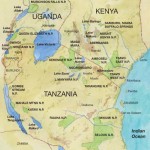
 “Uganda’s new
“Uganda’s new 


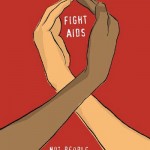
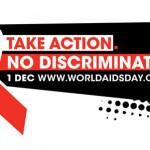
 The Transgender Day of Remembrance was initially a response to the murder of Rita Hester, which occurred 11 yrs ago this week (Nov. 28, 1998). Rita’s murder occurred just 5 weeks after the murder of
The Transgender Day of Remembrance was initially a response to the murder of Rita Hester, which occurred 11 yrs ago this week (Nov. 28, 1998). Rita’s murder occurred just 5 weeks after the murder of 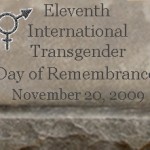 Please see below for a marvelous article on the meaning of today’s events from Jos, a trans identified author writing for
Please see below for a marvelous article on the meaning of today’s events from Jos, a trans identified author writing for  This NYT piece focused on the number of U.S. high schools who have created dress codes that explicitly classify “unconventional gender expression” as violations warranting disciplinary actions. Hoffman also mentioned some high schools whose dress codes are more accepting of “gender-blurring clothing.” Hoffman’s recent NYT article includes arguments for and against dress codes that allow for a diverse range of gender and sexuality expressions, noting safety as “a critical concern.”
This NYT piece focused on the number of U.S. high schools who have created dress codes that explicitly classify “unconventional gender expression” as violations warranting disciplinary actions. Hoffman also mentioned some high schools whose dress codes are more accepting of “gender-blurring clothing.” Hoffman’s recent NYT article includes arguments for and against dress codes that allow for a diverse range of gender and sexuality expressions, noting safety as “a critical concern.”
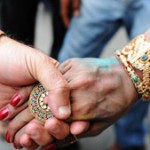
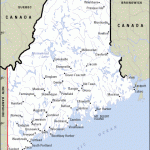
 In Washington, civil unions (AKA “everything but marriage”) between same sex partners and opposite sex partners older than 62 was approved by almost the same percentage as disproved in Maine: Approximately 53% to 47%.
In Washington, civil unions (AKA “everything but marriage”) between same sex partners and opposite sex partners older than 62 was approved by almost the same percentage as disproved in Maine: Approximately 53% to 47%. the repeal of 377 was the change in mentality of judges, parliamentarians and everyday Indians since the petition was filed in 2001. Activists in India have led painstaking efforts in India to increase awareness about how HIV/ AIDS cannot be addressed in a punitive environment and to increase support for the rights of LGBTQI people (
the repeal of 377 was the change in mentality of judges, parliamentarians and everyday Indians since the petition was filed in 2001. Activists in India have led painstaking efforts in India to increase awareness about how HIV/ AIDS cannot be addressed in a punitive environment and to increase support for the rights of LGBTQI people (